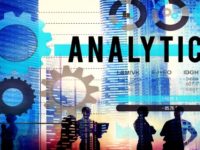The sentient enterprise is a road map to help businesses become agile in the face of change. The concept was coined by Oliver Ratzesberger, President of Teradata Labs, and Professor Mohan Sawhney at the Kellogg School of Management at Northwestern University.
They saw a trend in companies seeking faster, more agile, real-time operations. To achieve these goals, businesses needed to optimise human intervention when it came to data to optimally use generated insights. As a result, the sentient enterprise model was developed to promote a shift in technology, a shift in people and culture, and a shift towards automation so companies can evolve.
The sentient enterprise concept helps businesses rethink their strategy in a changing, connected and digital world to develop better analytic capability. Through a shift in people, culture and the right technologies, a business can work more closely with the data they’ve collated and analysed, to make autonomous decisions at a massive scale in real-time.
In each one of these shifts, there will be changes made to the organisation’s architecture and individual job descriptions. These shifts are simply a result of what is already under review in most businesses, like answering questions of there the company is headed five years from now and how to do more with less.
It’s important the sentient enterprise model is approached with a holistic view of the company, rather than siloed actions that only help individual departments in the short term. Working holistically to build flexible technology platforms will better equip a business in the long term to adapt with change.
Here are three major shifts to become a sentient enterprise.
- Capability shift – technology
Companies begin their sentient transition by first recognising that the solution delivery process is failing to meet business outcomes. The rapid evolution of data marts (the access layer of a data warehouse) and scalable data structures, forces organisations to rethink technologies across the business, and how they collect and leverage their information being collected. Implementing a behavioural data platform and agile data warehouse can help you develop greater agility to respond to market changes.
- Cultural shift – people and processes
One of the most challenging aspects of sentient enterprise transformation is overcoming rigid work processes within an organisation. Companies must look to adopt collaboration, gamification and silo-smashing techniques to make the people within the organisation more productive and agile to changes. Productivity boosters like collaborative ideation platforms and analytical application platforms can greatly assist with this cultural shift, giving staff easier access to transformative tools.
- Automation shift – smarter machines
With the appropriate technology and culture in place, you can entrust machines and algorithms to do more of the grunt work and take on active decision making. An autonomous decisioning platform can also be incorporated into the business to assist in this process.
If we can build self-driving cars, we can definitely automate thousands of daily corporate decisions. The roles of analysts within organisations will change, as they work more to improve algorithms and set strategic direction, rather than analysing the data sets themselves.
When an organisation works through these stages to become a sentient enterprise they can use technology and data to react to internal and external forces in near real-time. The end state of the sentient enterprise will be powered by automation and artificial intelligence.
Businesses will act like a single organism, free from siloed processes, taking self-governing actions as a response to internal and external events. Ultimately the business’s employees will entrust smart machines to do the grunt work, and focus on higher-level decisions that support the strategic direction of the organisation.
Alec Gardner, General Manager – Advanced Analytics, ANZ, Teradata














